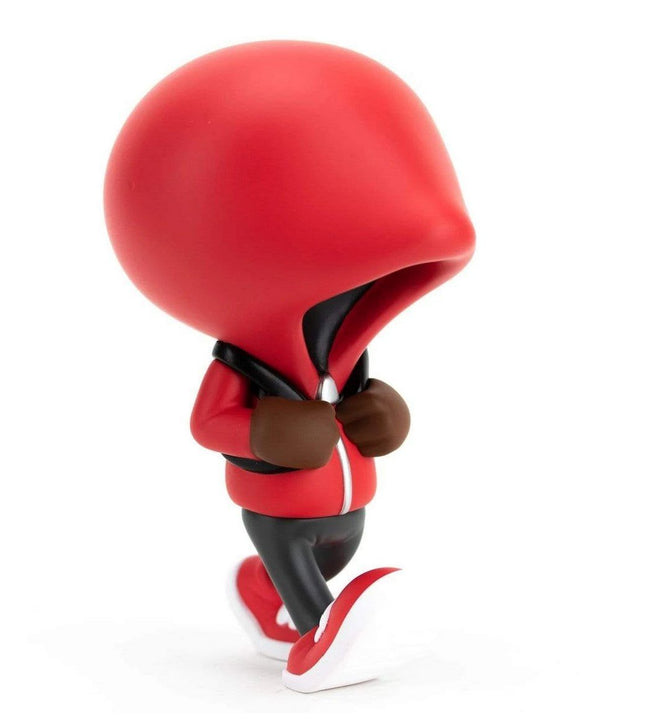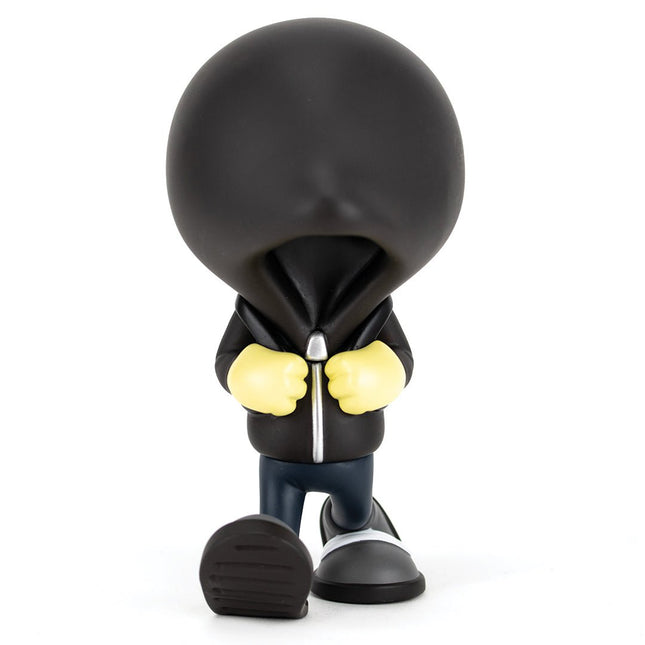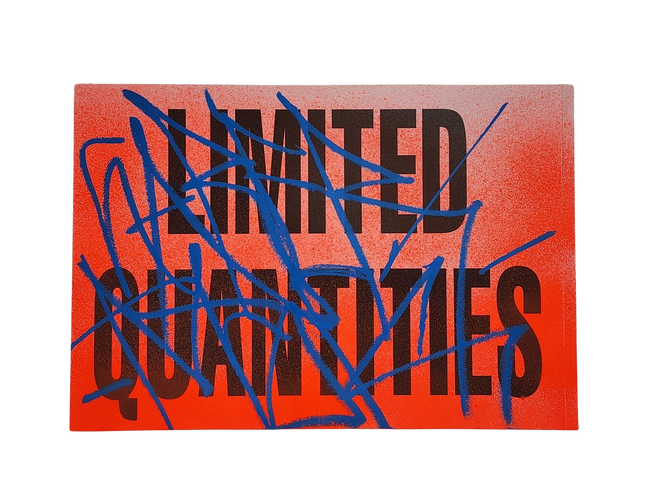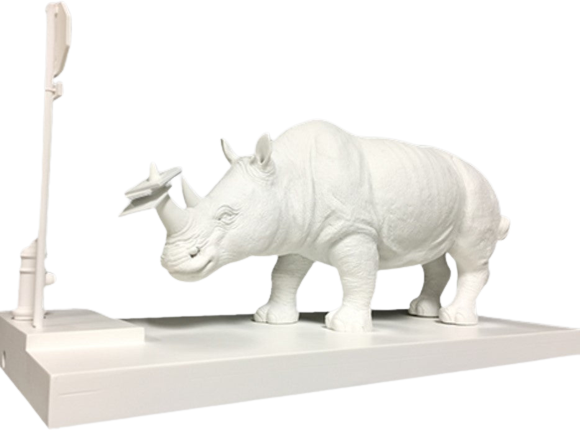
Street Art
-

Vandul Vandul Walk Retro Red Art Toy Sculpture by Vandul
Vandul Walk- Retro Red Limited Edition Vinyl Art Toy Collectible Artwork by street graffiti artist Vandul.
$226.00
-

Vandul Vandul Walk Black Art Toy Sculpture by Vandul
Vandul Walk- Black Limited Edition Vinyl Art Toy Collectible Artwork by street graffiti artist Vandul.
$226.00
-

Saber Limited Quantities Slap-Up Label Sticker Original Tag Art by Saber
Limited Quantities Slap-Up Label Sticker Original Tag Art by Saber Original Spray Paint Art Drawing on Glossy US Flag Sticker by Graffiti Artist Modern Street Artwork. 2020 Signed by Tag Original Slap Up Graffiti Art 10x7 Neon Orange Spray Paint & Acrylic Paint Tagged on Limited Quantities Sticker. Saber's Signature Style and Medium The notion of exclusivity and scarcity often heightens the allure of an artwork, a concept that street pop art and graffiti artwork embody with particular zeal. In the realm of this artistic expression, the 'Limited Quantities' slap-up label sticker original tag art by Saber is a vivid exemplar of such rarity and desirability. This piece is a testament to the graffiti artist's signature style, where the urban landscape becomes a canvas for bold statements and visual disruptions. The artist, Saber, whose real name is respected in the street art community, chooses an everyday object—a glossy US flag sticker—and transforms it into a conduit for artistic expression. Measuring 10x7 inches, the work features neon orange spray paint and acrylic, a combination that Saber employs to create an arresting visual impact. The piece is a 2020 original, signed by the artist's tag, a mark of authenticity in the graffiti world. Saber's work is a dialogue between the artwork and its viewers. It is a conversation sparked by the vibrant hues and the vigorous, almost aggressive application of the tag that slices through the text 'Limited Quantities.' Using a slap-up sticker underscores the guerrilla nature of street art—fast, unexpected, and often fleeting. This mode of art-making aligns with the concept of limited editions; just as the sticker is quickly placed, it can be just as rapidly removed or covered, its existence as fleeting as the quantity it denotes. The Cultural Resonance of Limited Quantities in Modern Street Art In the culture of street pop art and graffiti artwork, the phrase 'Limited Quantities' speaks volumes. It is not just a literal indication of availability but also a symbolic nod to the transient nature of the genre. Street art is often at the mercy of environmental elements, city clean-up crews, or even other artists who may paint over a piece in the ever-evolving urban gallery. Thus, each work's existence is inherently limited, a transient moment of expression captured before it is altered or erased. Saber's piece serves as a literal and figurative marker of the times. In an age where consumerism often leads to mass production and replication, there is a growing appreciation for what is rare and unique. With its exclusive tag and vibrant spray paint on a glossy sticker, this artwork becomes a collectible item, a treasure hunt find for street art lovers and casual observers alike. The neon orange color, often associated with caution and high visibility, plays a dual role in this artwork. It demands attention, ensuring the message and the art cannot be ignored. Simultaneously, it satirizes the concept of caution by implying that the content, the 'Limited Quantities' of authentic street art, should be approached with reverence and awareness. Saber, an American artist, has contributed to the urban art scene and shaped the conversation around the value and significance of street pop art. Much like the 'Limited Quantities' slap-up sticker, his works reflect a societal commentary on the state of art, consumerism, and the politics of space and visibility. They are symbols of resistance, creativity, and the indomitable spirit of the street art movement. Saber's 'Limited Quantities' sticker is more than just a piece of graffiti artwork; it is a statement on street pop art's transient yet impactful nature. It is an emblem of the scarcity that often accompanies true creativity and originality in the bustling marketplace of ideas that is the modern cityscape. With each piece, Saber not only leaves his mark on the physical world but also imprints on the collective consciousness of a culture that continues to seek out the rare, the unique, and the authentic expressions of human experience.
$65.00
-

Josh Keyes The Collector Sculpture by Josh Keyes
The Collector Limited Resin Sculpture Artwork by Modern Pop Artist Josh Keyes. 2017 Limited Edition Displayed With Box The Collector - is the 3rd sculpture by Josh Keyes from our Signature Series. Once started as a beautiful painting, it has now been turned into a fully detailed sculpture with a classy Matte White finish. Sculpture Size: 18" L x 7" W x 9" H approximately Medium: Resin Josh Keyes' "The Collector" stands as a remarkable manifestation of modern pop art, embodying the fusion of street art sensibilities and acceptable art discipline. This 2017 limited edition resin sculpture is the third in Keyes' acclaimed Signature Series, which captures his work's striking visual narratives and meticulous detail. The Transition from Canvas to Sculpture Originally conceived as a painting, "The Collector" transformed into a fully realized three-dimensional form, retaining its two-dimensional predecessor's intricate detail and profound thematic elements. The transition from painting to sculpture allowed for a new interpretation of Keyes' vision, presenting it in a tangible, touchable medium. The sculpture's matte white finish enhances its sophisticated silhouette, emphasizing the clean lines and the stark contrast between the subject and its environment. The sculpture commands presence with dimensions of approximately 18 inches in length, 7 inches in width, and 9 inches in height. Cast in resin, a medium celebrated for its durability and acceptable detail capacity, "The Collector" is both a robust and delicate piece, a testament to Keyes' ability to navigate the complexities of form and substance. A Statement in Street Pop Art & Graffiti Artwork "The Collector" resonates within street pop art and graffiti artwork through its bold statement and presence. Despite its pristine finish, the piece carries the spirit of street art—challenging the observer, engaging with environmental themes, and commenting on the interaction between the natural world and human-made structures. The rhinoceros, a frequent subject in Keyes' work, is depicted alongside a street light, a juxtaposition that invites viewers to contemplate the intrusion of urban development into natural habitats. In the broader context of Josh Keyes' portfolio, "The Collector" is a signature work that showcases his concern with ecological and post-apocalyptic themes. Keyes' art often features wild animals in urban settings, exploring the boundaries between human civilization and the natural world, a theme that resonates deeply in today's ecologically conscious society. The Cultural Impact of "The Collector" As a piece of art, "The Collector" transcends mere aesthetics to engage in a cultural dialogue. It visually explores the clashes and coexistence between urban life and nature. The sculpture's stark white color serves as a canvas, highlighting the shadows and contours of the piece and allowing the form to become the central narrative. This absence of color suggests a tabula rasa, or a blank slate, inviting many interpretations from the audience. Josh Keyes' work, particularly "The Collector," aligns with the ethos of modern pop art by drawing on recognizable imagery and repurposing it within a new context. In doing so, he creates a discourse that is accessible yet laden with depth, much like the street art and graffiti that adorn the walls of cities worldwide. It is a discourse that speaks to the ubiquity of environmental change and the pervasive impact of human influence on the natural world. In conclusion, Josh Keyes' "The Collector" is a profound piece that captures the essence of contemporary issues through the lens of street pop art and graffiti artwork. Its transformation from a detailed painting to a sculptural form allows it to occupy physical space and engage with audiences directly and tactilely. Through this work, Keyes continues to challenge viewers, prompting them to reflect on the intersection of human and animal domains and the delicate balance that must be maintained between progress and preservation. The sculpture, with its limited availability, not only serves as a piece of art but also as a collectible item that mirrors our society's current ecological and cultural challenges.
$365.00





